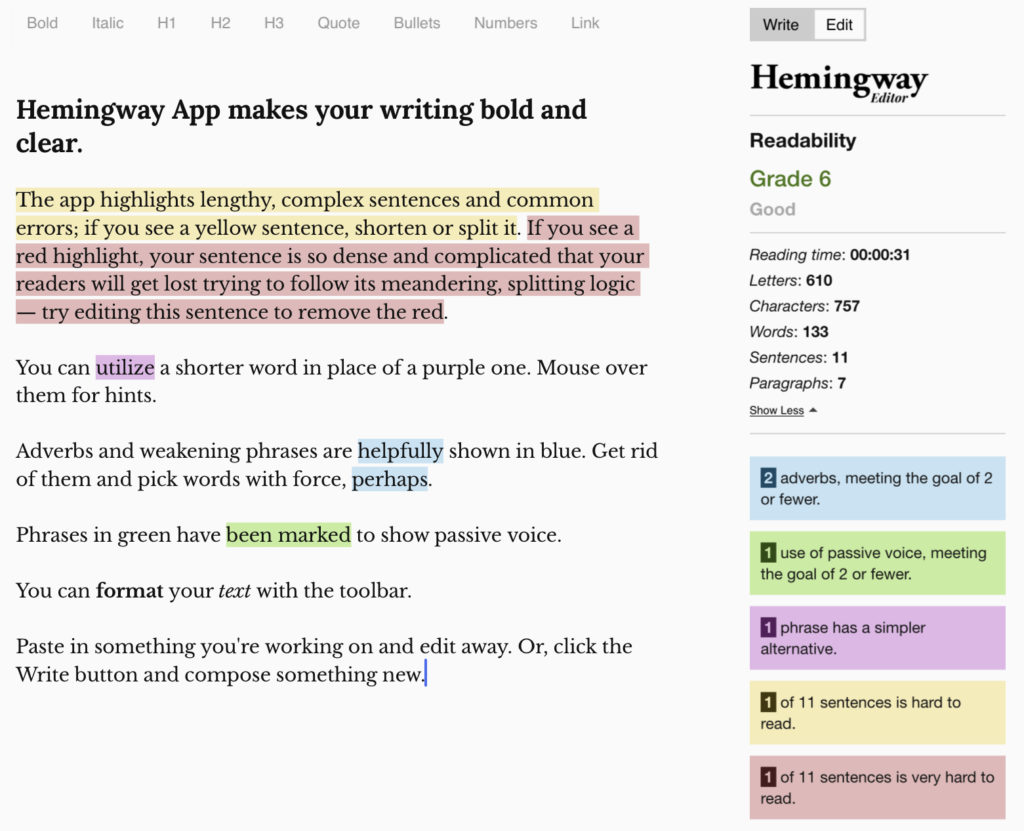Ernest Hemingway was famous for his sparse style, making one word do the work of ten. In the same way, the web tool hemingwayapp.com eschews features and gets right to the business of making your writing better. Here is a short orientation.
At its core, the hemingwayapp site is a bare bones text editor in a browser window. The workflow is simple: open the main page to start typing, or paste in your own text. With your text in the editor, use the toggle in the upper right corner to switch from the distraction-free Write view to the annotated Edit view.
The program suggests improvements in five areas. Remove or replace adverbs and weakening phrases (highlighted in blue) for more impact. See the dreaded passive voice highlighted in green, and words with simpler alternatives in purple. Confusing sentences are shown in yellow, ripe for a rewrite. Finally, run-on sentences – my personal nemesis – are highlighted in red.

With edit mode enabled, the page updates suggestions in real time as you type. Editing becomes a game to make the highlighting go away! The edit view also shows word count, and selecting ‘show more’ gives other useful information such as readability score, ‘grade level,’ and a time estimate for reading.
Writers may appreciate the simple text formatting tools shown at the top: bold, italic, three heading levels, quotation, hyperlink, and bullet or number lists. These options may help organize your text, but be aware they may not carry over when pasted into other editors. Apple Pages preserved very little, Microsoft Word kept more, and Evernote kept most, but not all formatting. WordPress (strangely) removed spaces after bold and italics. So if you plan to format while writing, be sure to round-trip a sample to your preferred editor first, or risk losing that work.
There are other minor pitfalls. The web interface has no auto-save, so a regular cut-paste back to another document is required. Some reviewers have mentioned the USA-centric nature of text analysis, and have criticized both the ‘grade level’ and ‘readability’ scores. The program does not catch every run-on, or confusing line, and there is no built-in spell check.
The hemingwayapp.com site can give a useful, if automated, first review, and may save your editor some work. Prolific solo bloggers and authors on a budget can benefit immediately from this simple, powerful, and free writing tool. Preserving your own style is important, so incorporate the suggestions that work, and above all, keep writing!




